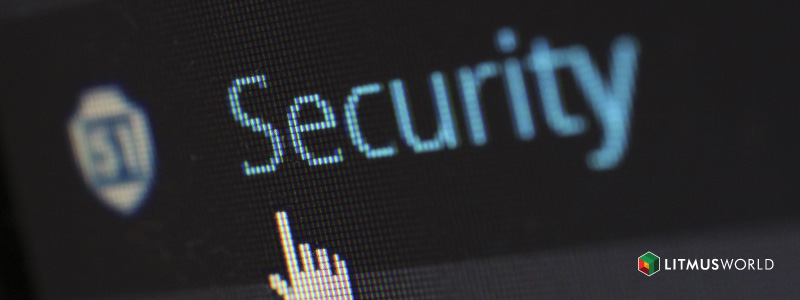Here’s why employee pulse is most critical during COVID-19
Here’s Why Employee Pulse Is Most Critical During COVID-19

Work from home as a practice has been around for a long time, but in reality, most organizations are now beginning to realise the importance of having defined Work-From-Home policies. All thanks to the current COVID-19 pandemic. Have you checked your Employee Pulse yet?
Work-from-home, in my opinion, is a double-edged sword. It brings both pros and cons for the business and the employees. And hence, it is important to find a middle ground in the trade-off of good and bad practices that can be adopted to sail the organization through these difficult times. Work from home has posed to be a great method of cost reduction on indirect expenses like infrastructure, there is a serious threat to productivity and its overall impact on the business.
During the current lock-down we conducted employee pulse conversations with various employees across organizations and here are some of the common unprecedented challenges that companies are facing today:
IT and Information Security.

These are two completely different issues but are clubbed together under one bucket for a reason. Both of them are giving IT professionals around the world sleepless nights (like literally). IT professionals are ill-equipped to manage remote support for technical issues. While some issues can be resolved remotely, some issues require human intervention such as hardware failures. Employees do not have a backup system to work on, eventually bringing all their projects to a sudden halt.
The other end of the issue is Information Security. In-office environments, the systems, employees and their activities are under constant surveillance. Working from home has dug deeper holes in the security policies with various systems now being connected through unsecured networks, leaving sensitive data susceptible to data breaches.
What should you do?
Take a quick pulse from your employees about the technical readiness of working from home. Run a detailed assessment of their current working environment to identify shortcomings on an individual level and design plans for addressing those with the help of their managers. Asking detailed questions about their firewalls, anti-viruses and functionalities in their current systems critical for your business can give immediate action items for IT managers to start addressing.
Managers are not prepared for managing virtual teams
Yes, even managers today are struggling to keep their teams motivated. Most managers have never dealt with remote workers and are not vary of the challenges faced by their teams. They are struggling between compassion for their teams and maintaining their team’s productivity. Lack of project visibility forms the biggest factor in this disparity.
What should you do?
Connect with your managers and take a pulse of their challenges. Once you have the data at hand, design reforms and policies that address most of these issues. For a deeper understanding of these issues and the reasons behind them, the subsequent challenges would help you get a clear picture of the situation from an employee lens.
Reduced Supervision.

Both managers and their employees have explicitly stated their concerns about the lack of supervision. While supervisors mentioned that due the lack of supervision, their employees may not be working hard enough, the employees feel that lack of supervision and direct access to their managers has created a communication gap between the teams. Employees believe that managers are neither supportive nor helpful in getting their jobs done.
What should you do?
This is the best time to run a 360 degree feedback with all your employees. This will help bridge the communication gap and let every employee (including managers) identify their shortcomings and where do they need to go the extra mile.
Increased functional silos.
Employees most likely and only interact with colleagues via emails and occasionally calls and video conferences. Remote working isn’t conducive to building meaningful relationships with your co-workers like we used to do in offices. Building professional relationships is important for two reasons: 1- interacting daily with co-workers facilitates goal-setting and 2- social interaction is directly related to workplace engagement and satisfaction. These have led to a dramatic reduction in cross-functional collaboration and increased functional siloes.
What should you do?
Increase engagement. Find digital ways of engaging with your employees, and increase collaboration. Engage employees in quizzes and games that involve teamwork. Use quizzes and contests and team-building exercises.
Draining mental health of employees.

Employees are slowly transitioning from excited to frustrated. There are multiple reasons for this:
- There is no line between personal and professional life anymore.
- Employees do not know when to start working and when to stop working.
- Isolation is making employees feel restless.
- Lack of social interaction and isolation is mentally draining employees faster than before.
- Employees are working more than required because they are at home.
These factors make the employee feel distanced from the organization and the feeling of belongingness slowly diminishes. Employees are feeling distanced and insecure. All these reasons combined, employees are feeling mentally drained which is impacting the work-life balance of employees.
What should you do?
Now is the time for the HR team to take on the roles of consultants and therapists. Have an always-on channel for your employees to vent out their frustrations and seek for help. Social communications are at the minimum and it is taxing for employees to cope up with the work pressure and way to reduce the steam. Connect frequently with your employees and keep taking a pulse of their emotions. Your employees need support. Constantly communicating with your employees will make them feel valued and increase the sense of belongingness. If you haven’t already, DO IT NOW!
The first part of safeguarding ourselves from any global crisis; be it the economic dip in 2009 or the current world pandemic, is to understand the situation before you create countermeasures to tackle the situation. LitmusWorld is helping major organizations around the globe in measuring the pulse of their employees through our platform.
Connect with us today and let our experts help you design employee engagement strategies. Together, we can strive, thrive and survive through the crisis.
Meanwhile, Stay Safe & Stay Healthy!

